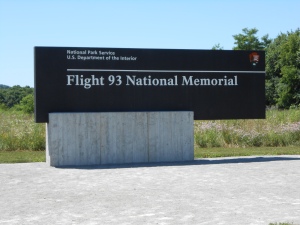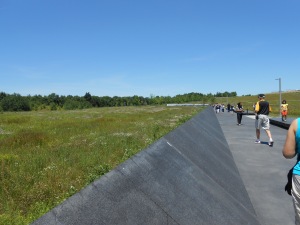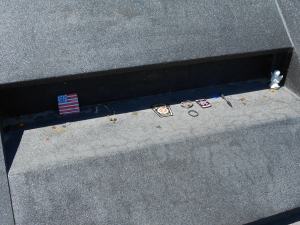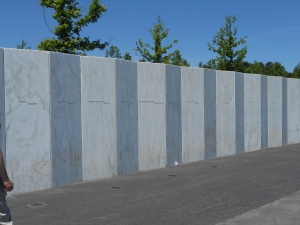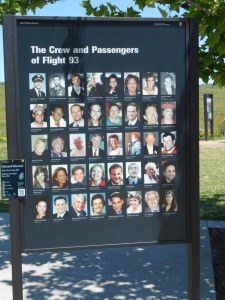Flight 93 National Memorial: Where America Remembers
On September 11, 2001, terrorists affiliated with al Qaeda hijacked
four planes. Two struck the towers of the World Trade Center in New
York, one at 8:46 a.m. (American Airlines Flight 11) and the second at
9:03 a.m. (United Airlines Flight 175). At 9:37 a.m., a third plane,
American Airlines Flight 77, crashes into the Pentagon. Thirty minutes
later, United Airlines Flight 93 crashes into a field in Somerset
County, Pennsylvania, after passengers unsuccessfully attempted to take
control of the plane from the hijackers. It is supposed that Flight
93’s ultimately destination was the U.S. Capitol building in Washington,
D.C.
Flight 93 National Memorial, near Shanksville, Pennsylvania,
commemorates the heroic efforts of passengers and crew members to stop
the hijacking. Administered by the National Park Service, it is the
only federal property that "remembers" what happened that fateful day.
I
have visited over two dozen national parks (most of them historic
properties), and I worked at one as a seasonal ranger for three
summers. By far, this was the most moving experience I have ever had at
a national park. It’s one thing to go to the Assembly Room at
Independence Hall and see where our nation was founded. It’s something
entirely different to visit a place where our nation’s freedom was
defended by ordinary people who didn’t want hijackers to attack our
nation.
Flight 93 is distinctive among the four hijacked flights
that day because it’s the only one that did not reach its intended
target. The flight’s departure from Newark was delayed because of
normal early morning traffic at the airport, which means that its
passengers knew about the attacks on the World Trade Center when
terrorists took control of the plane at 9:28 a.m. The passengers
formulated a plan to retake control of the cockpit from the hijackers;
ultimately, the hijackers chose to crash the plane rather than let the
crew and passengers regain control of the aircraft.
The
aircraft exploded upon impact, releasing over 7,000 gallons of fuel in a
fireball that rose higher than the hemlock trees surrounding the area.
Debris scattered over the field. Today, the walkway from the Memorial
Plaza to the Memorial Wall is lined with black concrete, black because
of the coal in the region. The black wall also separates the debris
field from the walkway; in other words, it provides a barrier between
tourists and where the human remains rest.
Park
visitors occasionally leave tributes in the small niches in the wall
and at the Wall of Names. Visitors also have an opportunity to leave
expressions of gratitude at the Memorial Plaza.
The
Wall of Names follows the flight path of Flight 93 toward the crash
site. It identifies crew members with their position (flight
attendants, etc.), along with naming the passengers who were not
involved in hijacking the plane (there were 44 people on board that
flight, but only 40 names are included on the Wall of Names). One thing
that struck me when I visited the Wall of Names was how somber it was.
Typically, at a national park, you hear people talking and
laughing–not at Flight 93 National Memorial. Park visitors truly
respect what happened at this site, and they treat it with proper
reverence.
At the site, several wayside signs provide information on the flight and what happened that fateful day.
One
thing is obvious when visiting the site–it is designed to honor those
heroes who prevented the hijackers from achieving their goal. It does
not memorialize the hijackers by name on the Wall of Honor, not does it
include their photos on the sign identifying the crew and passengers of
the flight. Some might consider that to be sanitizing the history of
the events, but since the park is a memorial to those who prevented the
attack on the U.S. Capitol (especially since Congress was in session
that morning), then I support their interpretive focus.
Flight 93
National Memorial is in the process of building a Visitor Center that
will include a Learning Center, and it is scheduled to be completed in
late 2015. If you travel there before its completion, you can view the
progress of construction from the Memorial Plaza. In any case, it is
definitely worth the trip to visit this national park–and you are
encouraged to leave a note expressing your gratitude for those who gave
their lives that day or just write your thoughts about the site.










